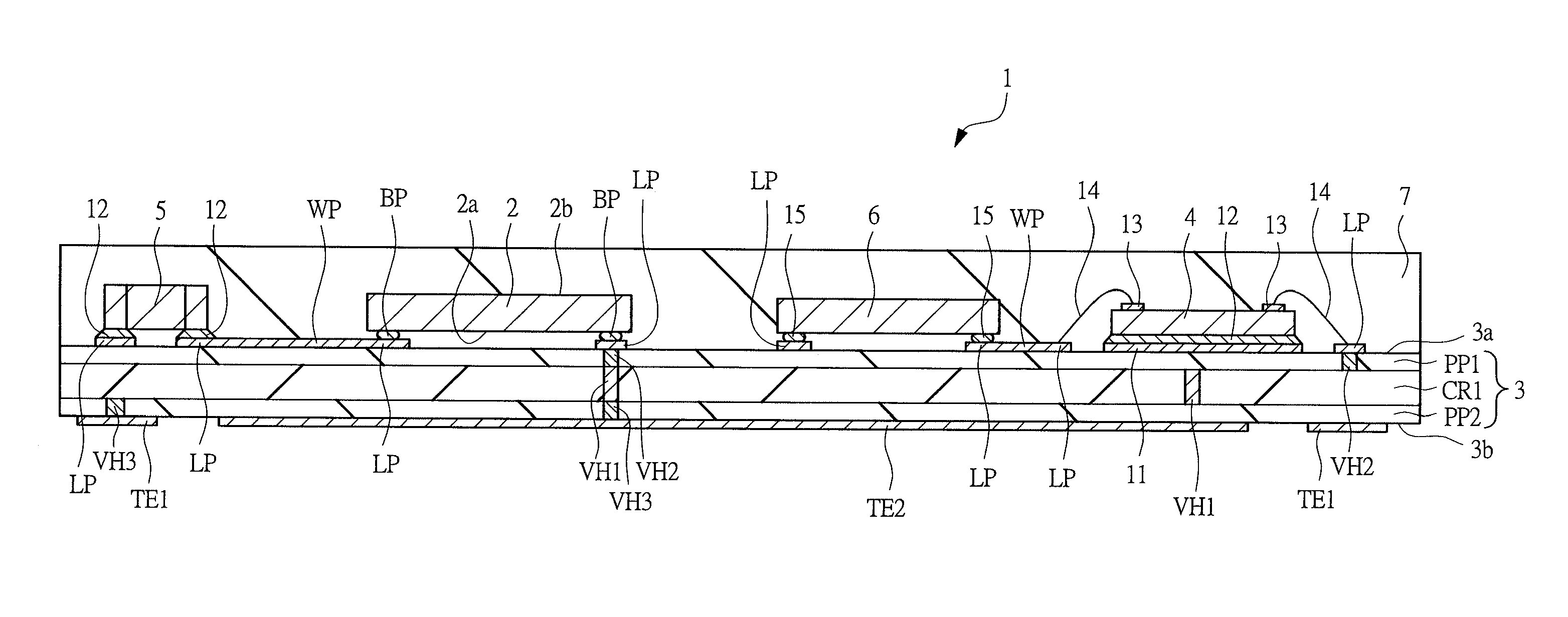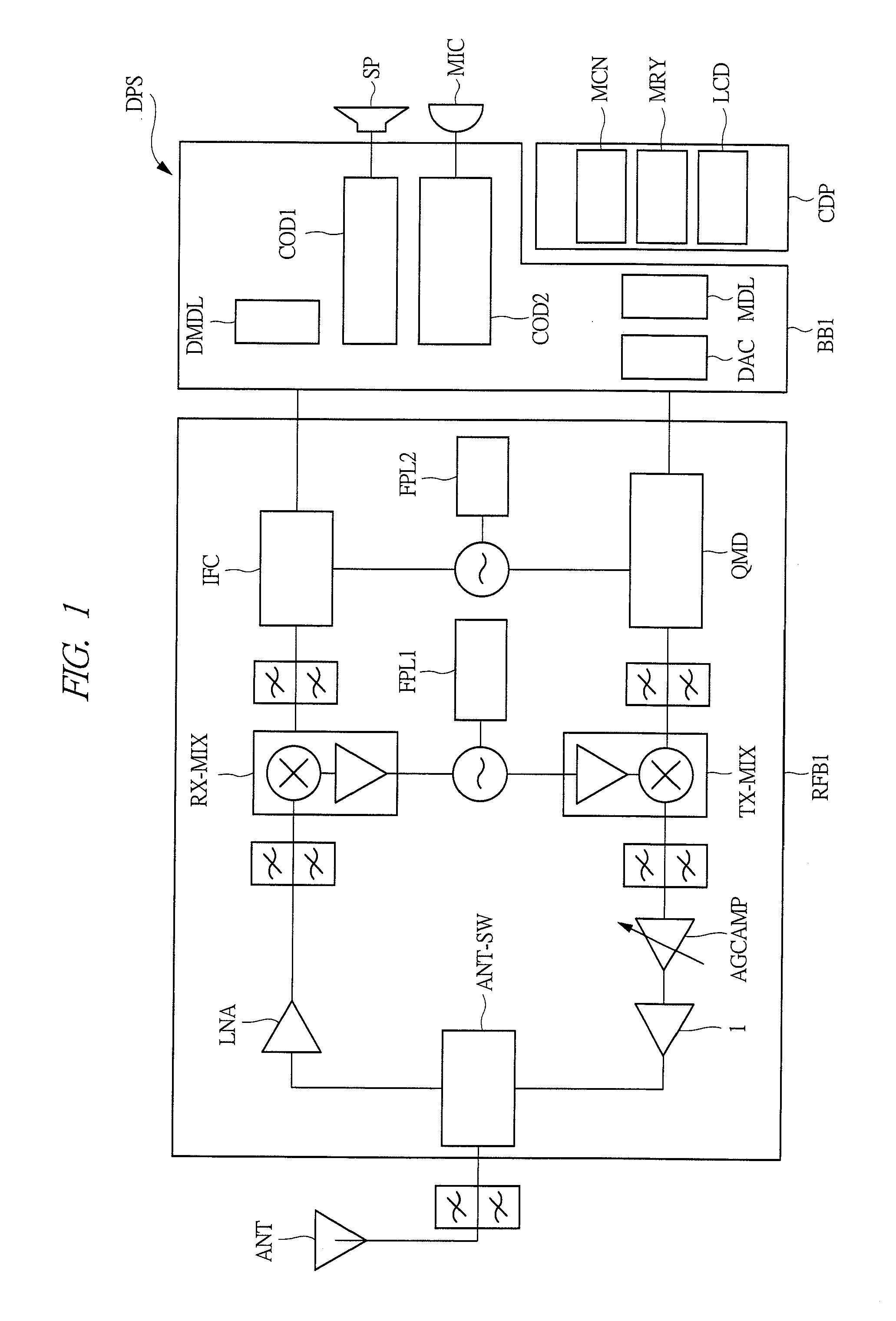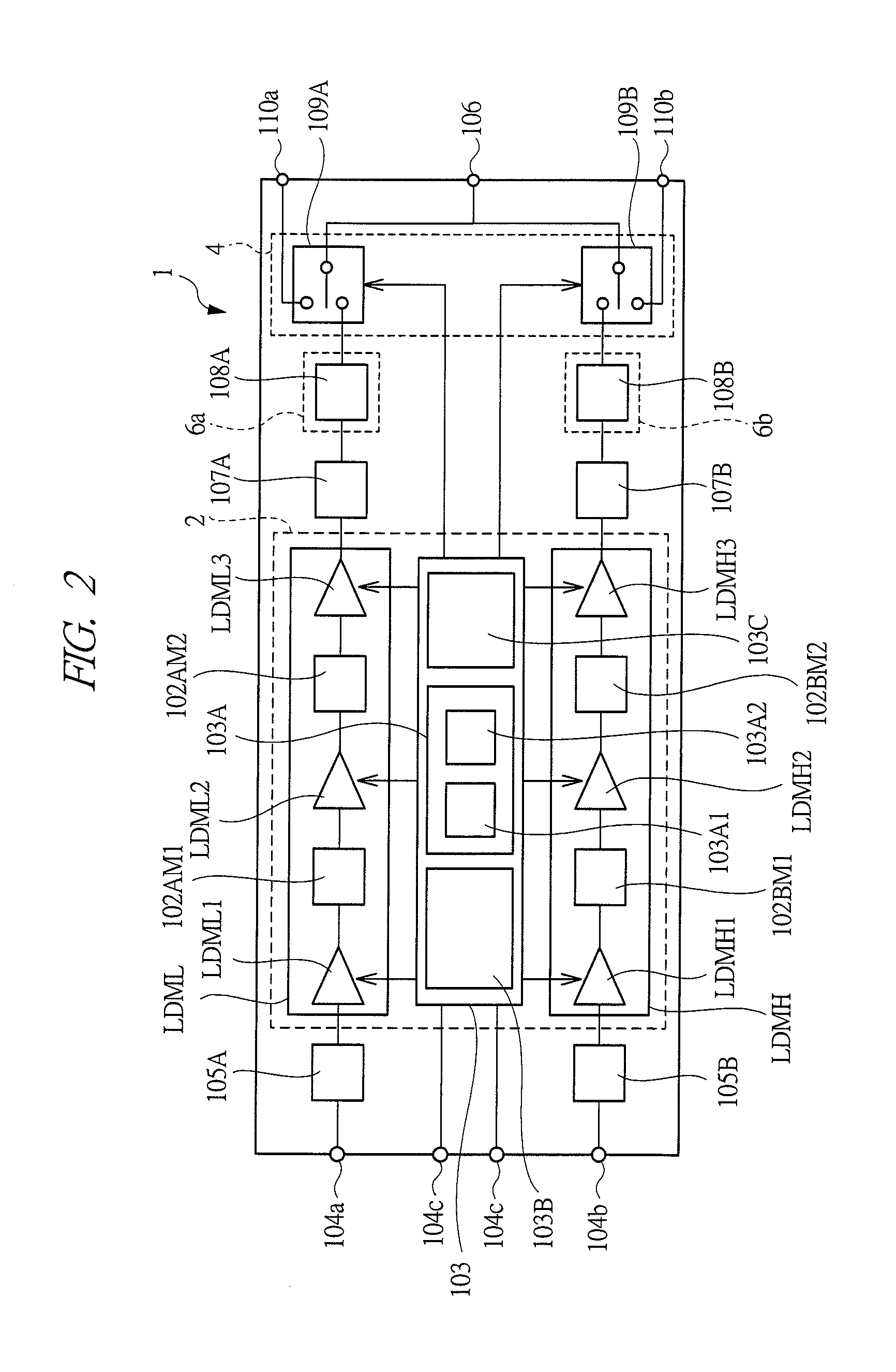Semiconductor device and manufacturing method thereof
a semiconductor amplifier and manufacturing method technology, applied in the direction of transistors, printed circuit aspects, basic electric elements, etc., can solve the problems of reducing the size of the electronic components mounted on the wiring board, not being able being inefficient in trying to achieve the size reduction of the rf power module, etc., to achieve the reduction of the mounting area of the semiconductor amplifier element chip, the effect of reducing the size of the rf power
- Summary
- Abstract
- Description
- Claims
- Application Information
AI Technical Summary
Benefits of technology
Problems solved by technology
Method used
Image
Examples
first embodiment
[0096]The present embodiment is a power amplifier module (semiconductor device) such as an RF (Radio Frequency) power module used (mounted) in a digital mobile phone (mobile communication system) transmitting information through a network of, for example, the GSM system and is a semiconductor chip (semiconductor device) used (mounted) in the power amplifier module.
[0097]Here, the GSM (Global System for Mobile Communication) is one of wireless communication systems or standards used for the digital mobile phone. There are three frequency bands defined for GSM. Of these, a 900 MHz band (824-915 MHz) is called GSM900 or simply GSM, a 1800 MHz band (1710-1910 MHz) is called GSM1800, DCS1800 (Digital Cellular System 1800) or PCN, and a 1900 MHz band is called GSM1900, DCS1900 or PCS (Personal Communication Services). GSM1900 is mainly used in North America. In addition, GSM850 which operates in a 850 MHz band is sometimes used in North America. A power amplifier module of the present emb...
second embodiment
[0372]FIG. 40 is a plan view of the principal part of the semiconductor chip 2 of the present embodiment, and it corresponds to FIG. 28 of the first embodiment described above. Similarly to FIG. 28, the planar layout of the source bump electrode BPS, the drain bump electrode BPD and the gate bump electrode BPG is shown by solid lines in FIG. 40. Also, in FIG. 40, the source conductor layer CNDS, the drain conductor layer CNDD and the gate conductor layer CNDG are shown by broken lines, the source pad M3S, the drain pad M3D and the gate pad M3G are shown by two-dot chain lines, and the LDMOSFET formation region REG1 is shown by broken lines so as to make the positional relation easily understood. FIG. 41 is a plan view of the principal part of the semiconductor chip 2 of the present embodiment showing the same region as FIG. 40, and it corresponds to FIG. 35 described above. In FIG. 41, the layout of the source bump electrode BPS, the drain bump electrode BPD and the gate bump electr...
third embodiment
[0403]The present embodiment relates to a semiconductor device and a manufacturing technique thereof, and more particular to a technique effectively applied to a semiconductor device including a heterojunction bipolar transistor (HBT) and a manufacturing technique thereof.
[0404]For example, some semiconductor elements use a III-V group compound semiconductor such as gallium arsenide (GaAs). The compound semiconductor is characterized in that it has higher mobility than silicon (Si) and semi-insulating crystal can be obtained. Also, the compound semiconductor can form a mixed crystal, and the heterojunction can be formed.
[0405]The semiconductor element using the heterojunction includes the heterojunction bipolar transistor (hereinafter, HBT). This HBT is a bipolar transistor using gallium arsenide as a base layer and using indium gallium phosphide (InGaP) or aluminum gallium phosphide (AlGaAs) as an emitter layer. More specifically, HBT is a bipolar transistor in which the heterojunc...
PUM
 Login to View More
Login to View More Abstract
Description
Claims
Application Information
 Login to View More
Login to View More - R&D
- Intellectual Property
- Life Sciences
- Materials
- Tech Scout
- Unparalleled Data Quality
- Higher Quality Content
- 60% Fewer Hallucinations
Browse by: Latest US Patents, China's latest patents, Technical Efficacy Thesaurus, Application Domain, Technology Topic, Popular Technical Reports.
© 2025 PatSnap. All rights reserved.Legal|Privacy policy|Modern Slavery Act Transparency Statement|Sitemap|About US| Contact US: help@patsnap.com



